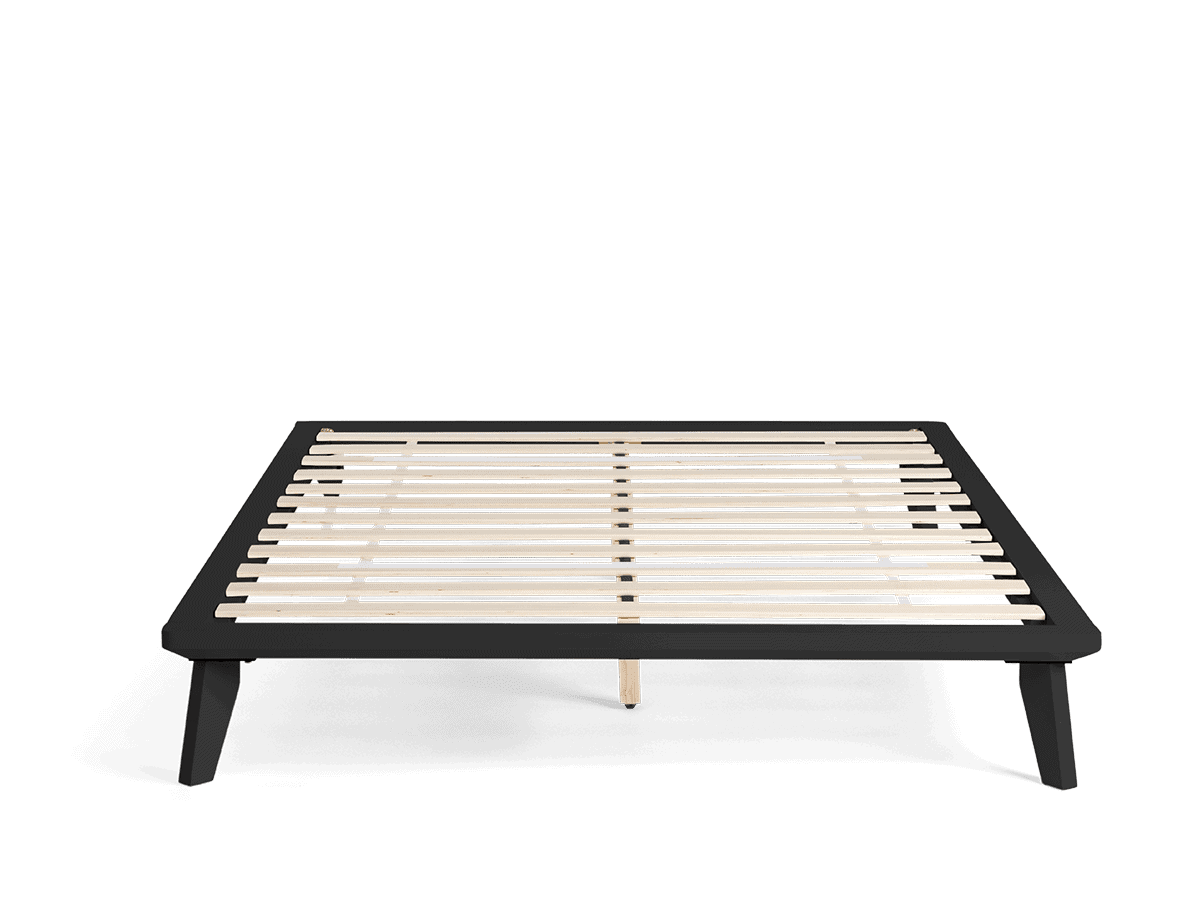Mattresses
Published January 27, 2022
15 minWhat is a Platform Bed?
With the growing demand for steady and sturdy beds, platform beds have become a popular choice for many sleepers. Platform beds offer numerous advantages over traditional beds, such as high compatibil

Table of contents
So, What Is a Platform Bed?Platform Bed Frame Sizes and DimensionsTypes of Platform BedsTypes of Platform Bed SurfacesPros and Cons of a Platform BedPlatform Bed vs. Box SpringDo You Need a Box Spring With a Platform Bed?Platform Bed vs. Panel BedPlatform Bed vs. SlatsPlatform Bed vs. Panel BedFrequently Asked Questions
With the growing demand for steady and sturdy beds, platform beds have become a popular choice for many sleepers. Platform beds offer numerous advantages over traditional beds, such as high compatibility and low prices. This guide will begin with what is a platform bed and cover everything you need to know about it.
Also, check out Platform Bed vs. Box Spring to know more about the difference between the two.
So, What Is a Platform Bed?
A platform bed is a low-profile bed that provides a firm and sturdy sleeping foundation. The average height of a platform bed is between 5 and 12 inches. These come in different shapes and sizes. Unlike the traditional beds, platform beds are more modern and sleek, enhancing the room’s aesthetics. More and more people are replacing their panel beds with platform beds as these offer a simple frame foundation which makes them usable without a box spring. They support all types of mattresses like memory foam, latex, foam, etc. Here’s a classic yet modern platform bed you may like. Some of the key features of platform bed frames are:- Raised and leveled the rectangular frame
- Bed Frames mostly between 6 and 18 inches
- Leg-less or with small legs
- Can be used without a box spring
Platform Bed Frame Sizes and Dimensions
Platform bed frames come in a lot of sizes and can fit almost every apartment room or house. Below are five common platform bed sizes for the frames.| Platform Bed Frame Size | Dimensions (in inches) | Dimensions (in cm) |
|---|---|---|
| California King | 72 by 84 | 183 by 213.5 |
| King | 76 by 80 | 193 by 203.5 |
| Queen | 60 by 80 | 152.5 by 203.5 |
| Full | 54 by 75 | 134.5 by 190.5 |
| Twin | 39 by 75 | 99.06 by 190.5 |
Types of Platform Beds
Platform beds are available in a variety of types and styles. We’ve listed six common platform beds for you to pick yours based on your requirements.- Wooden
- Upholstered
- Metal
- Headboard & Footboard
- Storage Space
- Floating Surface
Types of Platform Bed Surfaces
Although a mattress can be directly placed over a platform bed, you can add a box spring or an extra foundation if you wish to increase its height. Below are three types of bed frames for platform beds: slatted and metallic.- Solid surface
- Slatted surface
- Metallic surface
Pros and Cons of a Platform Bed
Like any other bed, a platform bed has its own pros and cons.So, here’s what are some of the advantages of platform beds along with disadvantages to help you make a wise choice.Pros:- Don’t require a box spring
- Cost-effective
- Versatile (suitable for almost all mattresses)
- Come in a variety of designs
- Keep you cool by offering optimal airflow and preventing moisture
- Metal beds are more durable
- Perfect for memory foam mattresses
- Offer extra storage options
- Not suitable for people with mobility disabilities due to low height
- Challenging to move after installation
- Wood platform beds can deteriorate over time due to heavy weight
Platform Bed vs. Box Spring
Although both box springs and platform beds provide a strong foundation for the mattress, they have some notable differences.Refer to the chart below:| Basis | Platform Beds | Box Springs |
|---|---|---|
| Dimensions | About 18’’ height, heavier | About 25’’, lighter |
| Price | Affordable | Expensive |
| Comfort | Provide adequate air circulation | Provide minimal air circulation |
| Storage space | Extra storage facilities like drawers or boxes | Little to no storage available under the bed |
| Compatibility | Ideal for memory foam mattresses | Not suitable for memory foam mattresses |
Do You Need a Box Spring With a Platform Bed?
A platform bed doesn’t need a boxspring. It has a supportive base, which is low to the ground. This base eliminates the need for a box spring. But, a box spring on a platform bed may be a requirement laid by some brands and mattresses. For instance, innerspring mattresses require the support of a box spring. Hence, it’s important to check it with the manufacturers before making a purchase.Platform Bed vs. Panel Bed
Panel beds or box spring beds use wood slats or metal bars to support mattresses. Most of them also have side railings, footboards, and headboards. They are higher in height and offer increased breathability. Here are a few points on how Platform Bed differs from Panel bed.- Price
- Size & Space
- Comfort
- Panel beds provide more airflow, thereby providing a cooler experience. Platform beds, on the other hand, retain more heat.
- Panel beds offer more bounce and flexibility. Platform beds are more firm.
- Design
Platform Bed vs. Slats
Slats are strips of wood or metal used to support the mattress. Although platform beds don’t necessarily need them because some are designed with a solid base, a solid base platform bed can provide extra support but reduce the breathability. Hence, the slats have to be placed at a specific distance. Platform beds are a popular choice today due to their affordable pricing, availability of different platform bed styles, additional storage facilities, and compatibility with all kinds of mattresses. Make sure you choose your type of platform bed surface carefully, based on your requirements.Platform Bed vs. Panel Bed
Panel beds or box spring beds use wood slats or metal bars to support mattresses. Most of them also have side railings, footboards, and headboards. They are higher in height and offer increased breathability.Here are a few points on how Platform Bed differs from Panel bed.- Price
- Size & Space
- Comfort
- Panel beds provide more airflow, thereby providing a cooler experience. Platform beds, on the other hand, retain more heat.
- Panel beds offer more bounce and flexibility. Platform beds are more firm.
- Design












